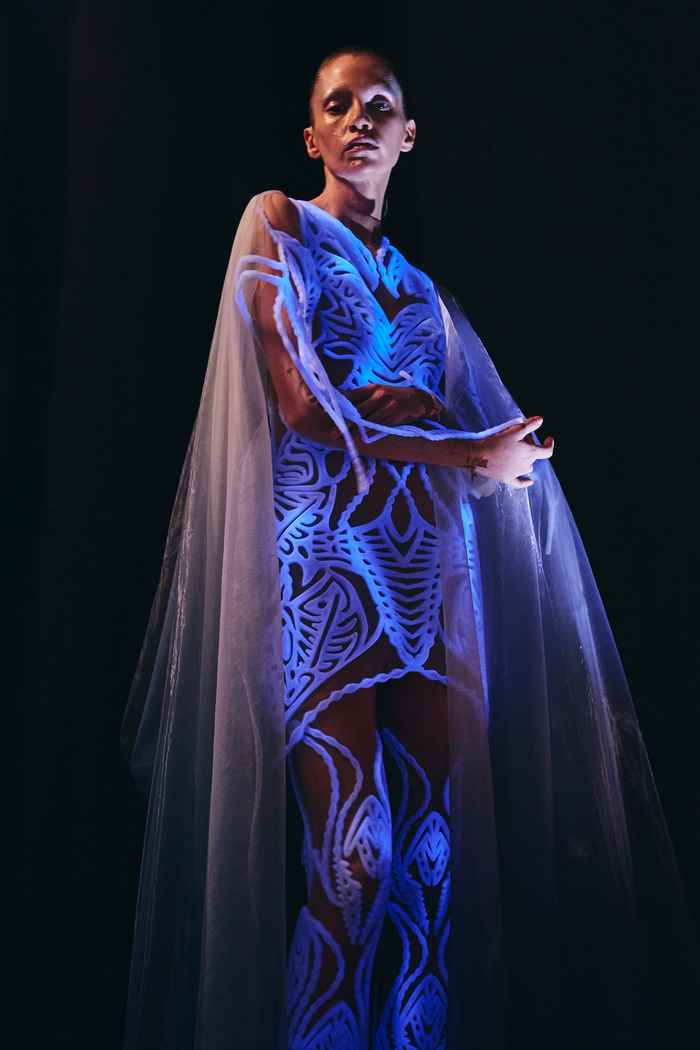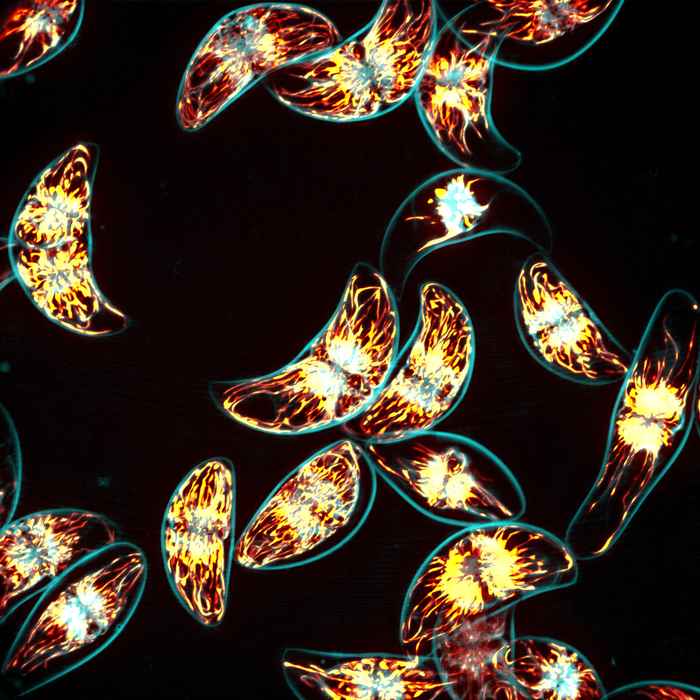Physics meets fashion: a bioluminescent dress
8 July 2025

A sense of urgency laps at every facet of Sympoiesis, the new fashion collection presented by Iris van Herpen at Paris Haute Couture Week on Monday. For nearly two decades, the couturier has worked in communion with the primordial rhythm of the organic and the human imperative of the technological. Of the 17 looks presented in the show, the opening one is a special piece: a first-of-its-kind Living Look, created from 125 million bioluminescent algae which are alive and emit light in response to the movement of the wearer. The garment brings together two worlds: that of fashion and that of nature – in a collaboration involving biophysicists from the University of Amsterdam.
Light-emitting algae
The bioluminescent dress is composed of a gel material that incorporates millions of single celled bioluminescent algae of the species Pyrocystis lunula, named after their moon-like shape. Among other species, these cells are the reason for “Zeevonk” – bioluminescent blooms of algae that paint the seaside in a mysterious glow, especially bright where waves break at the shore.
In the wild, the bioluminescence of the algae is a result of a defense mechanism that upon mechanical cues – think of disturbances in the water when a predator approaches – causes a bioluminescent light flash. The flash, commonly referred to as the “burglar alarm” mechanism, serves as a warning signal and can attract secondary predators, that hunt the primary predator of the cells.
Already in 2019 and 2020, biophysicists Mazi Jalaal, Nico Schramma and colleagues studied these cells' capability of measuring and responding to mechanical stresses in the lab of Prof. Ray Goldstein at the University of Cambridge. By combining microscopy and mechanical tests, in which the scientists hold single cells with micropipettes and gently indent them at various speeds and to various depths, they were able to measure the light-emission of the cells depending on the various ways of deformation. This led to a mathematical model to describe the complicated light production mechanism, published in [1].
From physics to fashion
Followed by that, over the past few years Schramma and Jalaal collaborated with Chenghai Li and Prof. Shengqiang Cai at the University of California San Diego. Together with bioluminescence researcher Prof. Michael Latz from the Scripps Institution of Oceanography in San Diego, they developed a novel material: by incorporating the cells in a gel matrix they created a flexible yet resistant substance which emits light upon deformation while keeping the cells alive even outside of water. In their collaboration, Schramma and Jalaal extended their model to predict light emission based on the deformation of these complex material probes, rather than just of single cells [2].

New materials bring innovation – and soon this particular material found various applications, especially in art and design – noteworthy in the works of biodesigner Chris Bellamy, who used the materials to cast various objects together with communities in French Polynesia, for whom bioluminescence of the sea is a more common – yet still mesmerizing – phenomenon [3].
The next step was the one from biodesign to fashion. Over the past few months, Bellamy developed and refined the bioluminescent material in a collaboration led by Amsterdam-based fashion designer Iris van Herpen [4]. Within the halls of the Science Park at the University of Amsterdam, in collaboration with Nico Schramma and the lab of Mazi Jalaal at the Institute of Physics [5] and the Science Park Technology Center, he refined the methods of developing this material and succeeded in creating the mechano-responsive bioluminescent elements in the garment that Iris van Herpen designed and crafted.
A living garment
The result is a beautiful merger of physics, biology, design and fashion. To keep the garment alive, the atelier attentively cares for this living system, with humidity, temperature, and circadian rhythm all tuned to their natural marine home. Caring for the garment, and for the 125 million Pyrocystis lunula it contains, requires a symbiotic relationship and redefines our creation traditions entirely, as the garment is cultivated rather than constructed.
References
[1] M. Jalaal, N. Schramma et al., Stress-Induced Dinoflagellate Bioluminescence at the Single Cell Level, Physical Review Letters 125 (2020) 028102.
[2] C. Li, N. Schramma et al., Ultrasensitive and robust mechanoluminescent living composites, Science Advances 9 issue 42 (2023).
Further links
[3] Lucid Life | Marama Ora: https://biocrafted.com/#lucid-life (see also this article in Dezeen)
[4] Iris van Herpen: https://www.irisvanherpen.com/ (related article in Nature)
[5] FluidLab Amsterdam: https://www.fluidlab.nl/